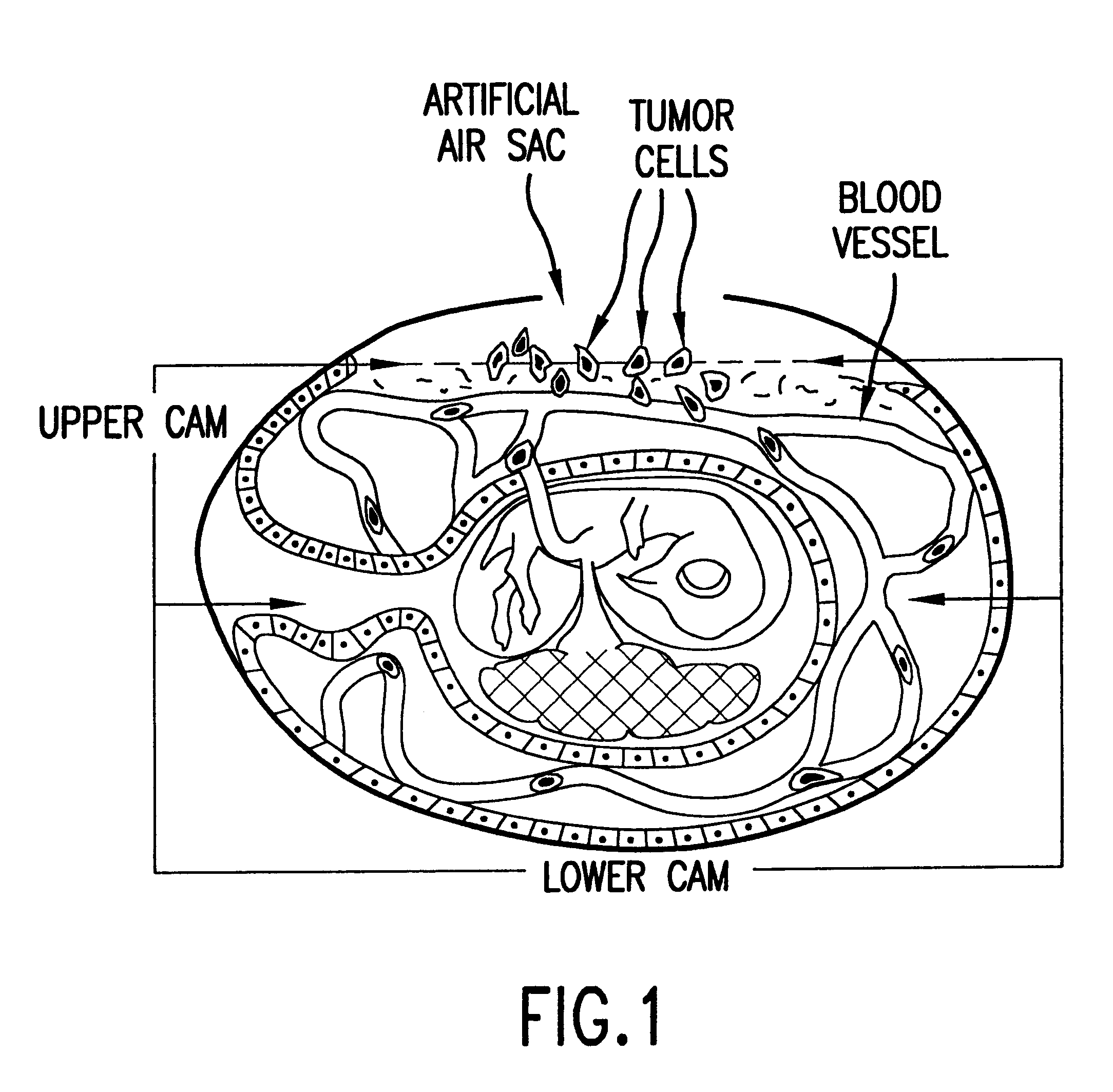In vivo assay for intravasation
a technology of intravasation and assay, which is applied in the field of in vivo assay, can solve the problems of reducing the number of cancer cells delivered into the circulation, few cells being able to extravasate, and reducing the metastatic potential of cancer cells, so as to achieve high sensitive effects and modulation of cancer cell metastatic potential
- Summary
- Abstract
- Description
- Claims
- Application Information
AI Technical Summary
Benefits of technology
Problems solved by technology
Method used
Image
Examples
Embodiment Construction
The invention described in the subsections below relates to a novel highly sensitive in vivo assay for measuring the metastatic potential of cancer cells. In particular, an assay is described that utilizes a chick embryo CAM model system in conjunction with PCR amplification for detection of cancer cell intravasation. The key features of the assay include its sensitivity and its applicability to any established cancer cell line or tumor explant. The in vivo assay system of the invention further provides a screening method for identifying agents with anti-metastatic activity. Such agents may be used to inhibit metastatic spread of cancer cells in subjects having cancer. In addition, the assay may be used to screen for nucleic acid molecules with anti-metastatic potential. For example, antisense molecules may be screened for their ability to inhibit metastasis. In such instances, the nucleic acid molecules to be tested may be introduced into cancer cells followed by inoculation into t...
PUM
| Property | Measurement | Unit |
|---|---|---|
| Weights | aaaaa | aaaaa |
| inner diameter | aaaaa | aaaaa |
| pH | aaaaa | aaaaa |
Abstract
Description
Claims
Application Information
 Login to View More
Login to View More - R&D
- Intellectual Property
- Life Sciences
- Materials
- Tech Scout
- Unparalleled Data Quality
- Higher Quality Content
- 60% Fewer Hallucinations
Browse by: Latest US Patents, China's latest patents, Technical Efficacy Thesaurus, Application Domain, Technology Topic, Popular Technical Reports.
© 2025 PatSnap. All rights reserved.Legal|Privacy policy|Modern Slavery Act Transparency Statement|Sitemap|About US| Contact US: help@patsnap.com


